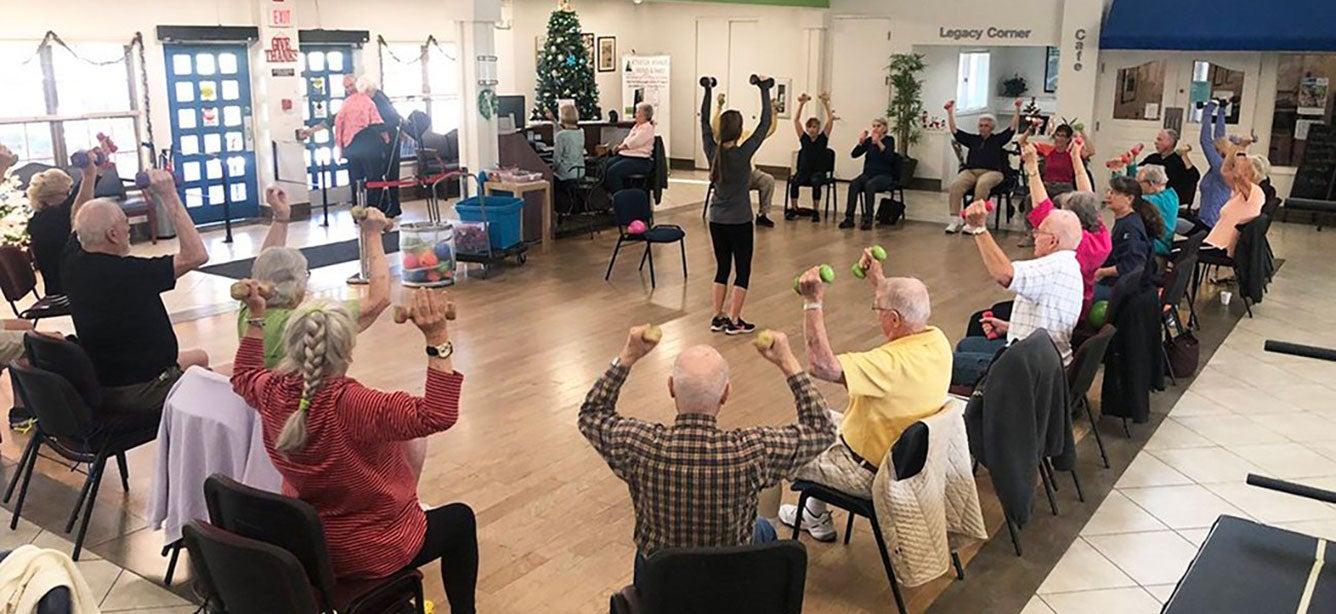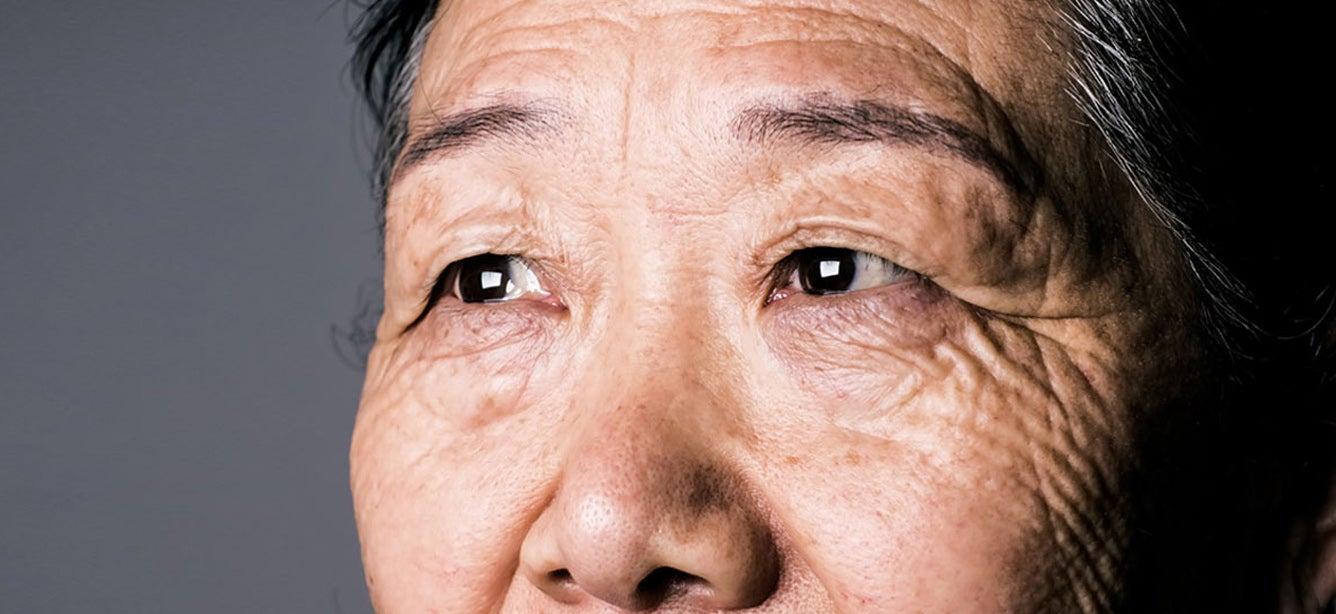
Everyone deserves the right to age well, but more than 17 million Americans age 65+ are economically insecure—living at or below 200% of the federal poverty level (FPL) ($30,120 per year for a single person in 2024).1 These older adults struggle with rising housing and health care bills, inadequate nutrition, lack of access to transportation, diminished savings, and job loss. For older adults who are above the poverty level, one major adverse life event can change today’s realities into tomorrow’s troubles.
Poverty measures
- More than 17 million (or roughly 1 in 3) older adults aged 65+ are economically insecure, with incomes below 200% of the Federal Poverty Level (FPL).1
- Economic insecurity is higher among minority older adults—43.4% of Black and 44.1% of Hispanic adults age 65+ have incomes below 200% of FPL.1
- Older women are more likely to live in poverty than men as a result of wage discrimination and having to take time out of the workforce for caregiving.2
- Social Security benefits lift 16.5 million older adults above the FPL.3
- More accurate measures of economic well-being—including the Elder Index™ and the Institute on Assets and Social Policy’s Senior Financial Stability Index—show millions of older adults struggling to meet their monthly expenses, even though they’re not considered “poor” because they live above the FPL.
Income and employment
- In 2022, the median income of older adults was $29,740. 10% of older adults who reported any income in 2022 earned less than $10,000.4
- The 2.4 million older adults on Supplemental Security Income (SSI) receive, on average, just $575 each month.5
- Among Social Security beneficiaries age 65+, Social Security represents 50% or more of their income for 37% of men and 42% of women, and 90% or more of their income of 12% of men and 15% of women.6
- On average, older women received about $3,900 less annually in retirement income in 2021 than older men due to lower lifetime earnings, time taken off for caregiving, occupational segregation into lower wage work, and other issues.7
- In 2023, 11.2 million people age 65 and older were working or actively seeking employment. The unemployment rate among older workers was 3%.4
- Older workers of color are most at risk for unemployment. In the second quarter of 2024, the unemployment rates for those age 65+ were 3.1% for Black men and 4.7% for Black women; 2.4% and 1.4% for Asian men and women, respectively; and 4.3% and 4.1% for Hispanic men and women.8
Debt and savings
- Of households headed by an individual age 65 or older, 62.1% had debt in 2019. The median debt of senior-led households was $34,000.9
- In 2022, just over half of adults age 55-74 had retirement savings; only 42% of those age 75+ did. Women, Blacks, and Hispanics were less likely to have any retirement savings.10
- Among all older adults, 9% have medical debt. But more than one in five older adults with incomes under $25,000 have medical debt.11
- Of retirees 65+ surveyed in 2023, 92% said Social Security was a source of income in the previous 12 months, and 64% said a pension was.12
Health and nutrition
- In 2022, nearly 7 million older Americans were food-insecure, and that rate was higher among minority groups.13
- While older adult enrollment in the Supplemental Nutrition Assistance Program (SNAP) has increased over the last decade, the USDA Food and Nutrition Service estimates that just under half of those older adults who are eligible for the program are enrolled and receiving benefits.14
- About one in four older adults 65+ scrimp on food, utilities, clothing, or medication due to health care costs. And in 2022, 37% of older adults were worried about affording health care in the coming year.15
- To cover health expenses in retirement, the average couple age 65+ would need $383,000 in after-tax savings.16
Housing
- Housing costs represent roughly 25% of expenses for all Americans age 65+.17
- In 2021, 11.2 million older adults were housing cost-burdened, spending over 30% of their income on housing.18
- Of homeowners age 65-79, 41% had mortgage debt in 2022. About 31% of homeowners age 80+ also had mortgage debt. Older mortgage holders have median monthly housing costs of $1,470.18
NCOA’s role
NCOA offers several programs and products that provide hope for economically insecure older adults.
Center for Economic Well-Being
NCOA’s Center for Economic Well-Being connects professionals with tools and resources to effectively find and enroll older adults into benefits programs, connect them with financial education, and maximize their savings.
Senior Community Service Employment Program (SCSEP)
NCOA manages 24 Senior Community Service Employment Program (SCSEP) offices under a grant from the U.S. Department of Labor. SCSEP helps adults age 55+ return to or remain active in the workforce by providing job training, job search services, and on-the-job experience.
BenefitsCheckUp offers easy access to benefits programs and resources that empower older adults, people with disabilities, and caregivers to apply for benefits and get help. It includes nearly 2,000 public and private benefits programs from all 50 states and the District of Columbia. BenefitsCheckUp connects millions of people with benefits programs that can help pay for health care, medicine, food, utilities, and more.
Sources
1. U.S. Census Bureau. POV-01. Age and Sex of All People, Family Members, and Unrelated Individuals, 2022. Found on the internet at https://www.census.gov/data/tables/time-series/demo/income-poverty/cps-pov/pov-01.html
2. Justice in Aging. Older Women and Poverty. Found on the internet at https://justiceinaging.org/wp-content/uploads/2020/08/Older-Women-and-Poverty.pdf
3. Center on Budget and Policy Priorities. Social Security Lifts More People Above the Poverty Line Than Any Other Program. Found on the internet at https://www.cbpp.org/research/social-security/social-security-lifts-more-people-above-the-poverty-line-than-any-other
4. U.S. Administration for Community Living. 2023 Profile of Older Americans. May 2024. Found on the internet at https://acl.gov/sites/default/files/Profile%20of%20OA/ACL_ProfileOlderAmericans2023_508.pdf
5. U.S. Social Security Administration. Monthly Statistical Snapshot, June 2024. Found on the internet at https://www.ssa.gov/policy/docs/quickfacts/stat_snapshot/index.html?qs
6. U.S. Social Security Administration. Fact Sheet: Social Security. Found on the internet at https://www.ssa.gov/news/press/factsheets/basicfact-alt.pdf
7. U.S. Social Security Administration. Fact Sheet: Social Security is Important to Women. Found on the internet at https://www.ssa.gov/news/press/factsheets/women-alt.pdf
8. U.S. Bureau of Labor Statistics. Labor Force Statistics from the Current Population Survey. Updated July 5, 2024. Found on the internet at https://www.bls.gov/web/empsit/cpsee_e16.htm
9. Congressional Research Service. Demographic and Socioeconomic Characteristics of Older Households with Debt: 2019.Found on the internet at https://crsreports.congress.gov/product/pdf/R/R46870/2
10. Federal Reserve Board. Survey of Consumer Finances 1989 - 2022. Found on the internet at https://www.federalreserve.gov/econres/scf/dataviz/scf/chart/#series:Retirement_Accounts
11. Consumer Financial Protection Bureau. 2023. Estimates using data from the 2018 FINRA Foundation National Financial Capability Study. Presented at Age + Action Virtual, June 21, 2023.
12. Board of Governors of the Federal Reserve System. Economic Well-Being of U.S. Households in 2023. Found on the internet at https://www.federalreserve.gov/publications/files/2023-report-economic-well-being-us-households-202405.pdf
13. Feeding America. Facts about senior hunger. Found on the internet at https://www.feedingamerica.org/hunger-in-america/senior-hunger-facts
14. U.S. Department of Agriculture. Food and Nutrition Service. Trends in Supplemental Nutrition Assistance Program Participation Rates: Fiscal Year 2016 to Fiscal Year 2020. December 2022. Found on the internet at https://fns-prod.azureedge.us/sites/default/files/resource-files/snap-trends-fy2016-2020.pdf
15. Nicole Willcoxon. Older Adults Sacrificing Basic Needs Due to Healthcare Costs. Gallup. June 15, 2022. Found on the internet at https://news.gallup.com/poll/393494/older-adults-sacrificing-basic-needs-due-%20healthcare-costs.aspx
16. Employee Benefits Research Institute. Projected Savings Medicare Beneficiaries Need for Health Expenses Remained High in 2022. Feb. 9, 2023. Found on the internet at https://www.ebri.org/content/projected-savings-medicare-beneficiaries-need-for-health-expenses-remained-high-in-2022
17. Rand Corporation. Spending Trajectories After Age 65. Dec. 5, 2022. Found on the internet at: https://www.rand.org/pubs/research_reports/RRA2355-1.html
18. Joint Center for Housing Studies of Harvard University. Housing America’s Older Adults. 2023. Found on the internet at: https://www.jchs.harvard.edu/sites/default/files/reports/files/Harvard_JCHS_Housing_Americas_Older_Adults_2023.pdf




